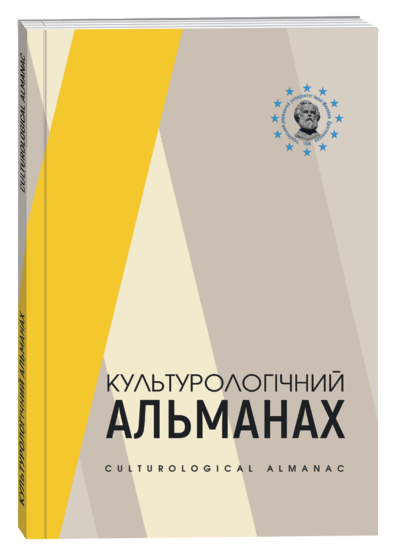SOCIO-CULTURAL ASPECCTS OF PERFORMATIV ART
DOI:
https://doi.org/10.31392/cult.alm.2022.4.25Keywords:
performative art, gestural painting, art practices, physicality, “Gutai” movement, act-action, processuality, interaction with viewerAbstract
Topicality. A turning point in world art – a massive transition from traditional art forms to performative ones – took place in the 1950’s. Performative art involves the active involvement of the entire subject-bodily nature of the artist in the artistic process, and the direct experience by the audience of the creative process itself as a cathartic act in which value attitudes are reshaped, a collective traumatic experience is overcome. The purpose of the article is to determine the features of performative art compared to classical art; in substantiating the methodological possibilities of cultural studies in the study of existential and anthropological problems of art. The methodology is based on an interdisciplinary approach, methods of hermeneutics and phenomenology. Historical and logical analysis was used to clarify the origins (schools) of the emergence of performative art: “action painting” (gestural painting, dripping, USA, J. Pollack), Tachism (Georges Mathieu, France), informal (Carl Appel, Asger Jorn), “Gutai” movement (Jiro Yoshiharo, Shozo Shimamoto, Japan). The scientific novelty consists in defining the essence of performative art associated with the transition from the external orientation of the subject to the internal one, when experiences and feelings become existential values; revealing the communicative essence of new art. Conclusions. The impact and significance of performative art on social processes is revealed.
References
Дзіро Йосіхара (1956). Маніфест руху «Гутай». Гэйдзюцу Синтё : журнал. Токіо. № 12.
Русаков С.С. (2021). Обіг творів мистецтва як сфера культурологічних досліджень. Cultural Studies and art: European development direction : International scientific conference. Publishing House “Baltija Publishing”. С. 104–107.
Keprow Alan. Assemblage, Environments & Happenings, 1966.
Манро А. (2013). Усі пейзажі: світ Гутаю. Гутаї: Чудовий ігровий майданчик. С. 35.
Rodenbeck J. (2013). Communication malfunction: happenings and Gutai. Gutai Splendid Playground. P. 265–269.
Nakazawa H. (2015). Art History: Japan 1945–2014. P. 30.
Tapie M. (2012). A Mental Reckoning of My First Trip to Japan. From Postwar to Postmodern. Art in Japan 1945–1989. P. 99–101.
Parker C. URL: https://thetokyofiles.com/2015/10/13/balloons-on-the-ginza-float-young-advertisers-1890-1989/
Held-Jr.J. (2012). Why Gutai? SFAQ. P. 108–111.
Shimamoto S. The Idea of Executing the Brush. From Post war to Postmodern. Art in Japan 1945–1989. P. 92–93.
Франческини Ф. (2001). Гутаї без кордонів. Японський художній авангард після другої світової війни. С. 7–18.








